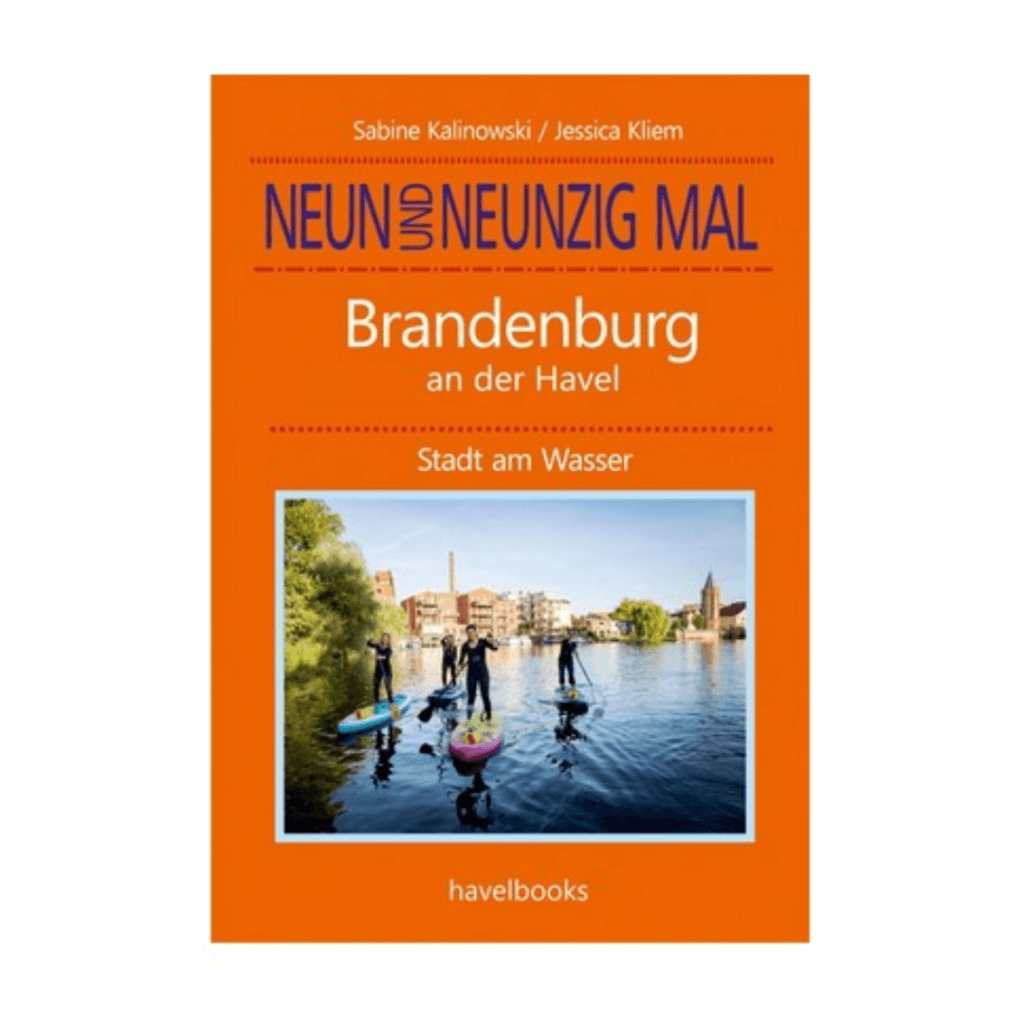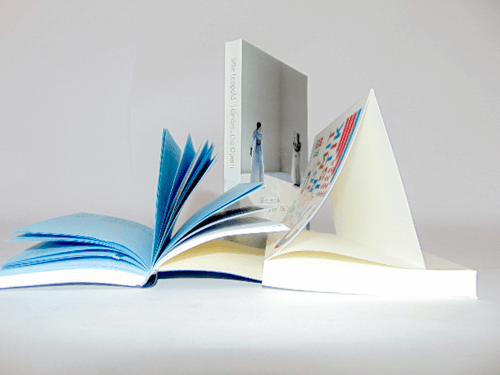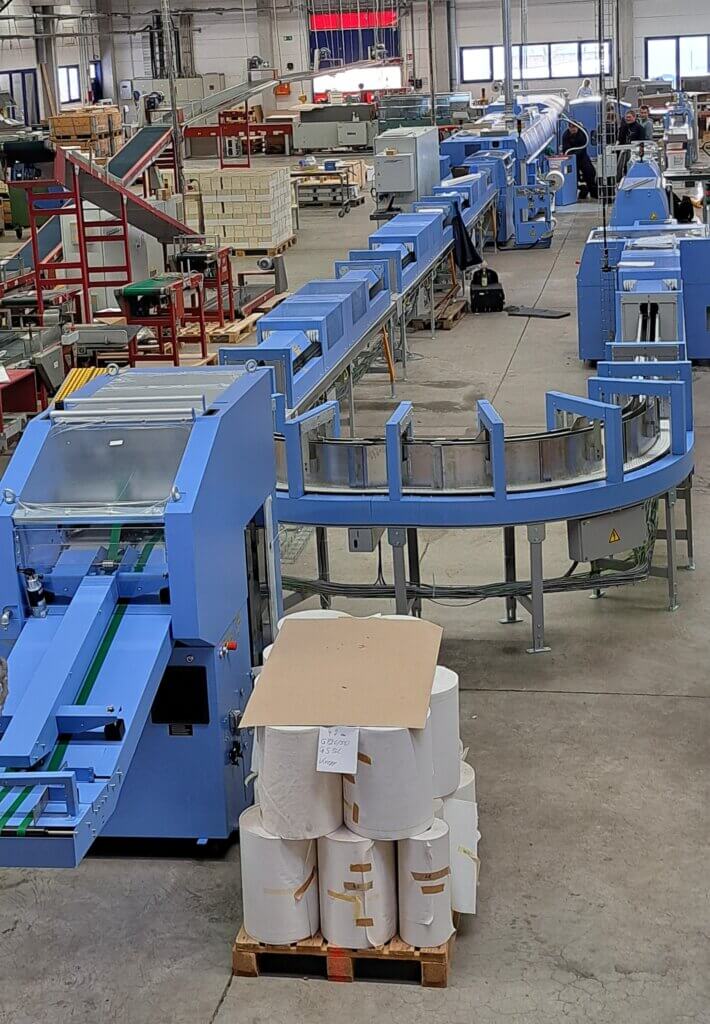Choosing the right binding is much more than a technical decision – it has a significant influence on the look, feel, durability and impact of a book. There are different variants of softcover bindings in particular, each with their own advantages. Whether a novel, non-fiction book, travel guide or catalog – softcover offers a flexible, cost-efficient and high-quality solution for a wide range of print products.
But not all softcovers are the same. Depending on the intended use, page count and processing requirements, there are different types of binding to choose from: from classic perfect binding to durable thread stitching and elegant gatefold brochures.
In this article, we provide an overview of the most important variants of softcover binding, highlight the differences and explain when which binding makes sense. Based on specific customer projects from Beltz Grafische Betriebe in Bad Langensalza, it becomes clear how versatile the options are – and what is important when making a choice.
Because if you have your book produced professionally, you should leave nothing to chance when it comes to the binding.
The contents at a glance
What is a softcover binding?
Definition and typical characteristics
Softcover binding – also known as brochure or paperback – is one of the most common types of book binding in the field of modern print products. It is characterized by a flexible cover made of cardboard or thick paper which, in contrast to a rigid hardcover, bends comfortably and is therefore easier to handle.
Despite their flexibility, softcover books are by no means less high-quality. Through the targeted use of finishes such as cellophane wrapping, embossing or spot varnish, the cover can be customized and adapted to the corporate design or target group.
Another advantage is that softcover bindings are often cheaper and quicker to produce – with a professional look and feel. This makes them the preferred choice for a wide range of projects – from literary works to travel guides and corporate brochures.
Advantages compared to hardcover
In direct comparison to the hardcover, the softcover binding scores above all with its lightness and flexibility. It fits comfortably in the hand, saves space and is therefore ideal for books that are frequently transported or read on the go.
Softcover also offers economic advantages: The lower material costs and reduced production costs make it an attractive alternative for small and medium print runs.
Nevertheless, no compromises need to be made in terms of workmanship – modern binding techniques ensure stability and durability. Especially with high-quality softcover productions, such as those produced by Beltz Grafische Betriebe, the result is often in no way inferior to the hardcover in terms of quality.
Overview of different softcover binding types
Hotmelt adhesive binding
A classic among softcover bindings: Hotmelt perfect binding uses a thermoplastic adhesive that hardens quickly and enables rapid further processing. It is cost-efficient and ideally suited to productions with a tight schedule.
However, it is somewhat less flexible and durable than other processes – so it is more suitable for products that are not subject to intensive long-term use. Ideal for advertising brochures, simple catalogs or information booklets, for example.
PUR adhesive binding
The PUR binding (polyurethane) is the “high-end” variant among adhesive bindings. It offers particularly strong adhesion, is flexible and holds together reliably even under high loads.
PUR is perfect for books with thick paper, large volumes or frequent use – such as training materials, illustrated books or high-quality corporate publications. PUR also shows its strengths in combination with cellophane wrapping or finishing.
Thread stitching in softcover
If you value high stability and longevity in softcover binding, you should opt for thread stitching. Here, the pages are sewn with a thread in addition to the glue – this ensures a particularly robust connection and good opening behavior.
Thread sewing is mainly used for high-quality book projects that need to last a long time – such as travel guides, notebooks or specialist literature. Although the additional work involved makes them somewhat more expensive than pure adhesive binding, they are worth it if the book is often picked up.
An example from the Beltz Grafische Betriebe production: “NeunundNeunzig Mal Brandenburg ” – a travel guide with softcover and thread stitching, ideal for traveling.

Softcover
The gatefold brochure is the elegant variant among softcover bindings. It is characterized by the cover pages folded inwards – so-called “flaps” – which are not only visually appealing, but also offer additional space for information or design elements.
It gives the book a high-quality look, improves the feel and protects the first pages at the same time. This form of binding is therefore particularly suitable for books with creative requirements or emotional content – such as travel guides, biographies or design projects.
A successful example: “Africa Crossing ” – a high-quality travelogue with a gatefold brochure that perfectly combines appearance and function.
When is which binding suitable?
Which softcover binding is most suitable depends heavily on the planned area of use, the desired feel and the lifespan of the product. Budget and design requirements also play an important role.
While PUR perfect binding is ideal for large print runs and books of medium size, thread sewing is recommended for long-lasting books with high demands on stability. The gatefold brochure, on the other hand, is ideal if the book needs to impress with a special look or additional functionality.
To give you a quick overview, we have summarized the most important criteria for you here:
| Binding type | Advantages | When does it make sense? |
|---|---|---|
| Hotmelt | Inexpensive, fast processing | Advertising booklets, catalogs, simple brochures |
| PUR binding | Very stable, flexible, durable | High-quality books, thick paper, frequent use |
| Thread sewing | Extremely robust, good impact behavior | Frequently used books, travel guides, notebooks |
| Softcover | High-quality appearance, additional information area | Design-oriented books, emotional content |
It’s best to let experienced professionals help you with your decision – because sometimes just one detail can decide which binding is the better choice in the end.
And this is exactly what Beltz Grafische Betriebe does: together with you, we find the solution that fits your project perfectly – technically, visually and economically.

Consulting, implementation & technical options at Beltz Grafische Betriebe
At Beltz Grafische Betriebe in Bad Langensalza, decades of experience meet modern technology – and this is particularly evident in the area of softcover binding. Customers benefit from intensive consultation in which all factors are taken into account: Project objective, print run, design requirements and budget.
Whether hotmelt, PUR, thread sewing or gatefold brochures – every variant is produced in-house using state-of-the-art machinery. The combination of offset and digital printing creates customized solutions that are both technically and visually impressive.
Particularly important: technical advice is always provided with the overall product in mind. This ensures that the binding, choice of paper and further processing fit together perfectly – and that the end result is a coherent, high-quality print product.
Would you like to see what this can look like in practice? Take a look at our references – there you will find a selection of realized customer projects in the field of softcover binding and more. Or take a look at the Beltz Buchhandlung website. There you can also order copies online and have them delivered directly to your home.
The right softcover binding makes all the difference
Whether pragmatic or high-quality, simple or with design requirements – softcover binding offers many options for adapting a print product precisely to the desired use. Depending on the requirements in terms of appearance, durability and budget, you can choose between different types of binding: from fast hotmelt adhesive binding to durable PUR bindings to thread sewing or flap binding for a special appearance.
Especially for frequently used books, emotional content or design-oriented projects, it is worth investing in the right binding. Experience shows that a smart choice not only increases the lifespan of the product, but also the perception of the reader.
Are you planning a project with softcover binding and would like expert advice on the technical possibilities?
Beltz Graphic Arts is happy to support you in the selection and implementation – from the idea to the finished product.
Contact us now without obligation and find the best solution together!


